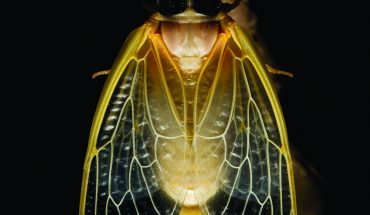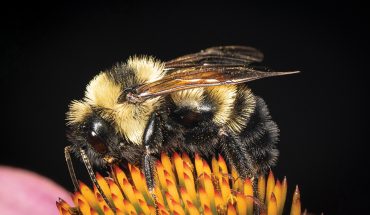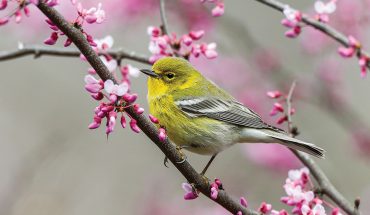Scarlet and Summer Tanagers are lesser-known species than the Northern Cardinal, but just as brilliant.
Words and photography by Mike Dunn
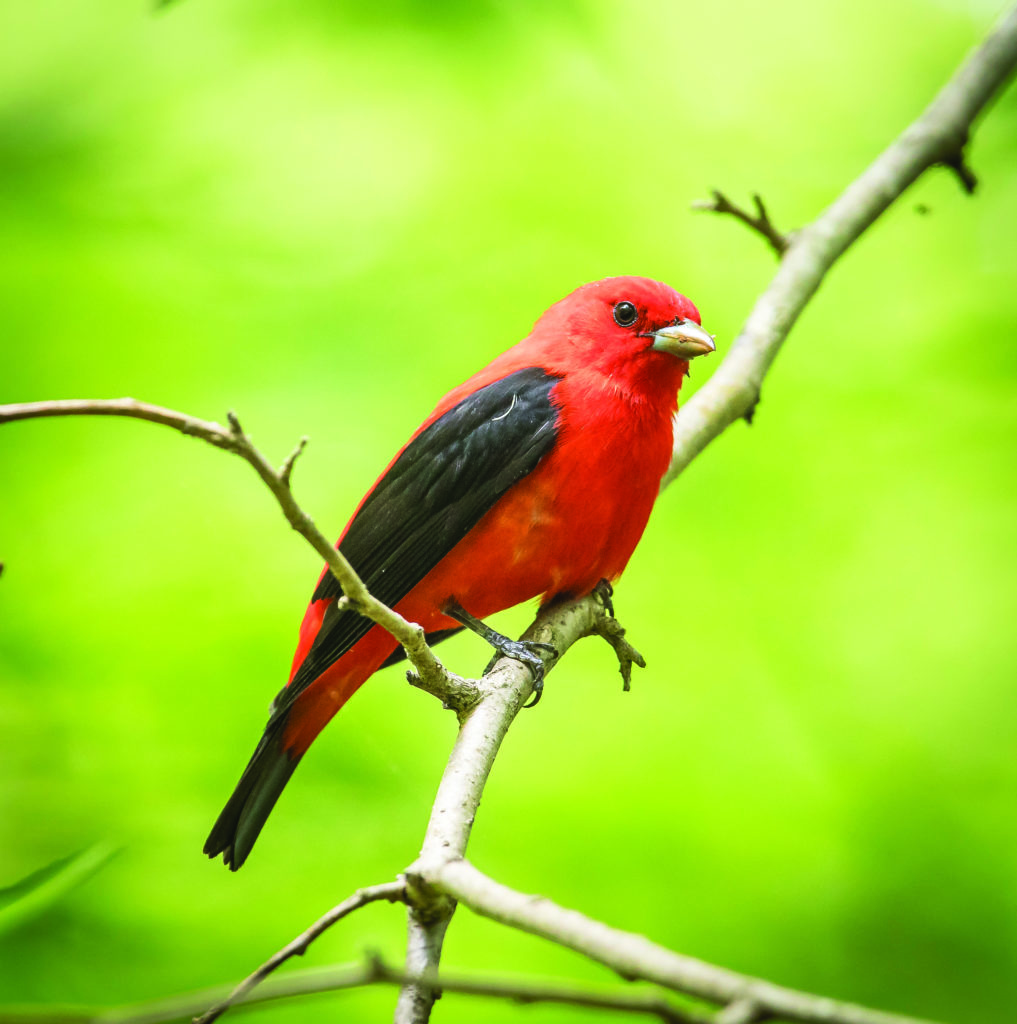
Almost everyone is familiar with our state bird, the Northern Cardinal. It’s so common and beloved around the country that it’s the official bird of seven states — the most of any species! Cardinals are found year-round throughout our region in forests, yards, and urban parks. My 89-year-old mother loves seeing them at her feeders on the back deck, where she admires the brilliant colors of the male “redbirds” — still a common name in use by many people, especially in rural areas of the South.
But did you know there are some other red birds that spend part of their year with us? The Summer Tanager and the Scarlet Tanager brighten our woodlands for several months of every year. Both are neotropical migrants, traveling from their wintering grounds in Central and South America to breeding areas in the north. They are generally less well known to most casual birders, since they tend to populate mature forests and spend much of their time in the tree canopy, where they can be difficult to spot.
Males of both species are bright red, much like a cardinal. Adult male Summer Tanagers are red all over, often with a hint of darker color in their wings. As the name implies, Scarlet Tanager males are intensely scarlet with jet-black wings and tails, one of the more vivid color combinations of any of our local birds. Females of both species lack the bold colors of the males, but are beautiful in their own right. A female Summer Tanager is yellow, occasionally with a wash of red, especially as she ages. Female Scarlet Tanagers are yellow below and more olive above, with some dark overtones in the wings. Immature and molting male birds are often splotchy, with hints of red and yellow coloration.
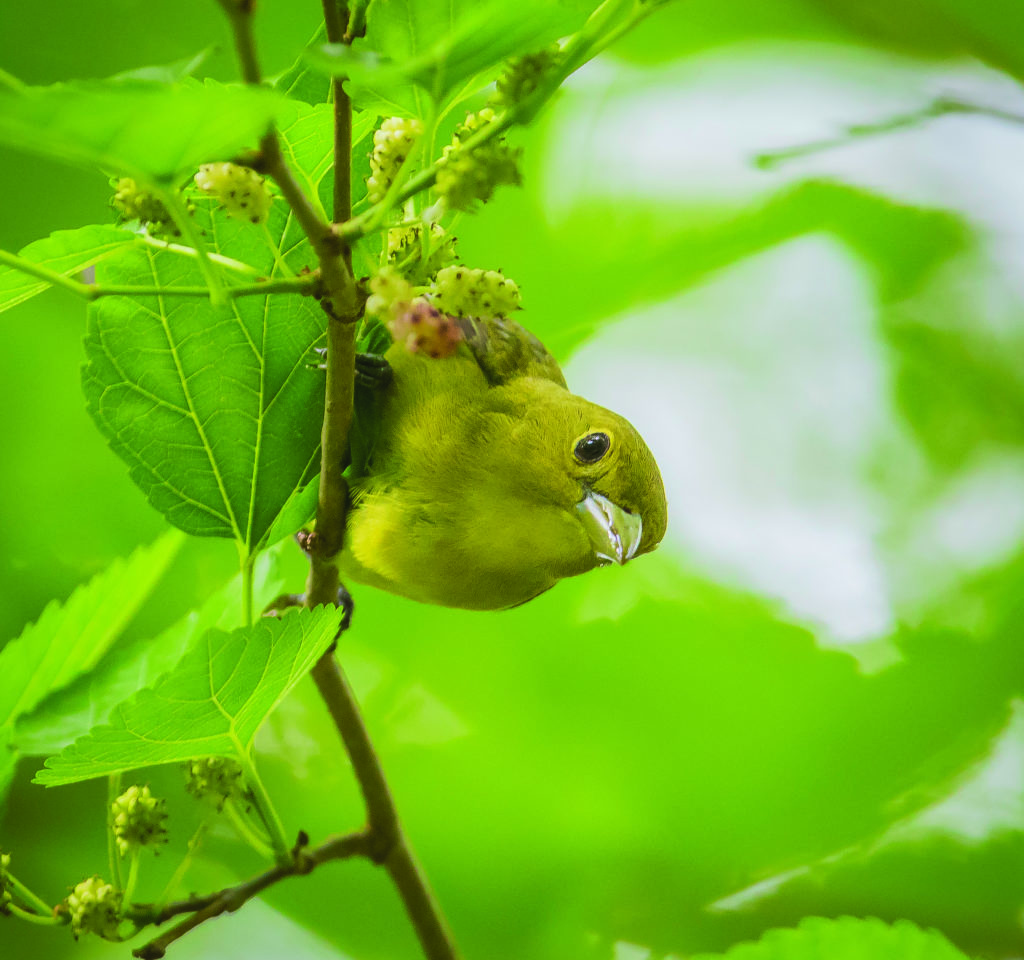
I have been obsessed with these birds for many years (I’ve even had an email address with “tanager” in it.) Each spring, I listen for their distinctive vocalizations, then start looking up in the treetops to try to catch a glimpse. Bird sounds are often described as being either songs or calls. Songs tend to be longer and more complex and are generally associated with territory, courtship, and mating. Calls are shorter and function as alarms or to communicate between paired birds or members of a flock. One of the fun things about birding is the way field guides describe the sounds made by birds using human phrases.
The song of the Summer Tanager is a warbling trill of notes that sound a bit like a shorter version of the sounds made by an American Robin: cheerily, cheer up, cheer up. The Scarlet Tanager song is similar, but includes a series of burry notes often described as sounding more like a robin with a sore throat. The calls of both species are more often heard than the songs: Summer Tanagers give a loud pit-i-tuk tuk, tuk when disturbed, while the Scarlet Tanager has a distinctive, descending chick-burr.
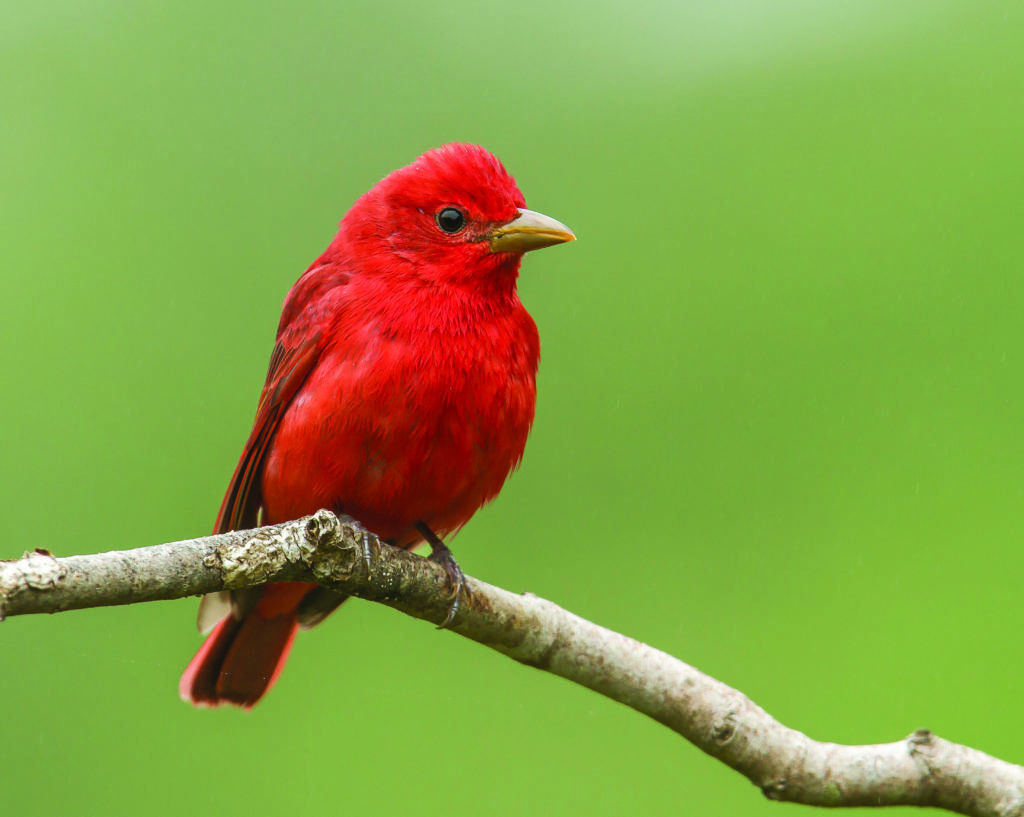
Summer Tanagers feed on a variety of insects and fruits, but are such bee and wasp specialists that they are sometimes called the “bee bird.” They are often seen hovering under the eaves of houses grabbing paper wasps near their nests. They also hawk other flying insects by flying out from a perch and grabbing them in midair. One of the pleasant surprises for me has been the affinity of the Summer Tanagers for our suet feeder. Both males and females are reliable visitors to this deck feeder in summer. We’ve even had birders come to the house just to see these beauties up close.
But it is the striking Scarlet Tanager that has brightened my May days these past few springs. Long my nemesis bird in terms of photography, they have suddenly made themselves available to me for a few weeks each spring. There is a small mulberry tree along the driveway near my workshop. One branch is head-high and parallel to the ground so it makes turning a vehicle around tricky. But when that branch started producing fruit, I realized this could be my chance to get photos of this elusive bird, so I haven’t trimmed it for years.
About the first week of May, I start hearing or seeing the birds in that tree when I walk back and forth to the shop while doing chores. The Scarlet Tanagers (last year there were two pairs) arrive before the fruit is even ripe and will make several feeding trips throughout the day as long as there are berries. Each feeding bout usually lasts only a few minutes and then they are off for 30 minutes or more before returning. Luckily, I can be working in the yard or shop and hear that chick-burr call and then ease over to the open door to get some photos.
I leave the camera set up on a tripod and slide into a chair and wait. The only trouble is the tree is very branchy, so it is difficult to get a clear view. A bird usually flies into the upper branches and then looks around for good berries before descending and picking them off with dangling, acrobatic moves or by hovering and plucking a juicy fruit from the end of twig. I still don’t have “the perfect photo,” but I am looking forward to giving it another go this month.
Your best bets for finding these other red birds is to head out this month to some mature forests on our local public lands: state parks like Umstead and Eno River, or nature preserves like Hemlock Bluffs are good bets. Listen for the distinctive calls. Then look up, and hope for a glimpse of those striking hues against the sea of leafy green.
_____
This article originally appeared in the May 2022 issue of WALTER Magazine

